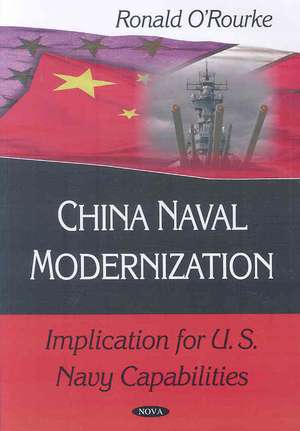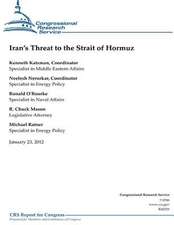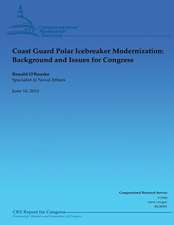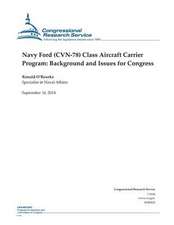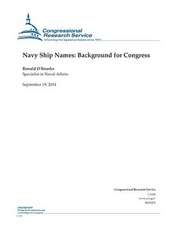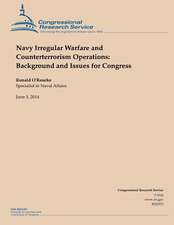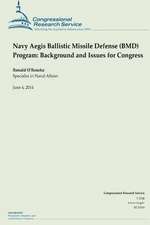China Naval Modernization: Implications for U.S. Navy Capabilities
Editat de Ronald O'Rourke, Dragica Kozari-Kovai, Maja Mustapi, Martina Deeljin, Korona Nenadi-viglin, Dorotea Muck-eleren Limba Engleză Paperback – 26 noi 2008
Preț: 290.93 lei
Preț vechi: 392.16 lei
-26% Nou
Puncte Express: 436
Preț estimativ în valută:
55.68€ • 57.91$ • 45.96£
55.68€ • 57.91$ • 45.96£
Carte disponibilă
Livrare economică 24 martie-07 aprilie
Preluare comenzi: 021 569.72.76
Specificații
ISBN-13: 9781604567090
ISBN-10: 1604567090
Pagini: 135
Ilustrații: black & white tables
Dimensiuni: 230 x 155 x 10 mm
Greutate: 0.22 kg
Editura: Nova Science Publishers Inc
Colecția Nova Science Publishers, Inc (US)
ISBN-10: 1604567090
Pagini: 135
Ilustrații: black & white tables
Dimensiuni: 230 x 155 x 10 mm
Greutate: 0.22 kg
Editura: Nova Science Publishers Inc
Colecția Nova Science Publishers, Inc (US)
Cuprins
Preface; Introduction; Background; Potential Oversight Issues for Congress; Legislative Activity for FY2008; Appendix. Additional Details on China's Naval Modernisation Efforts; Index.
